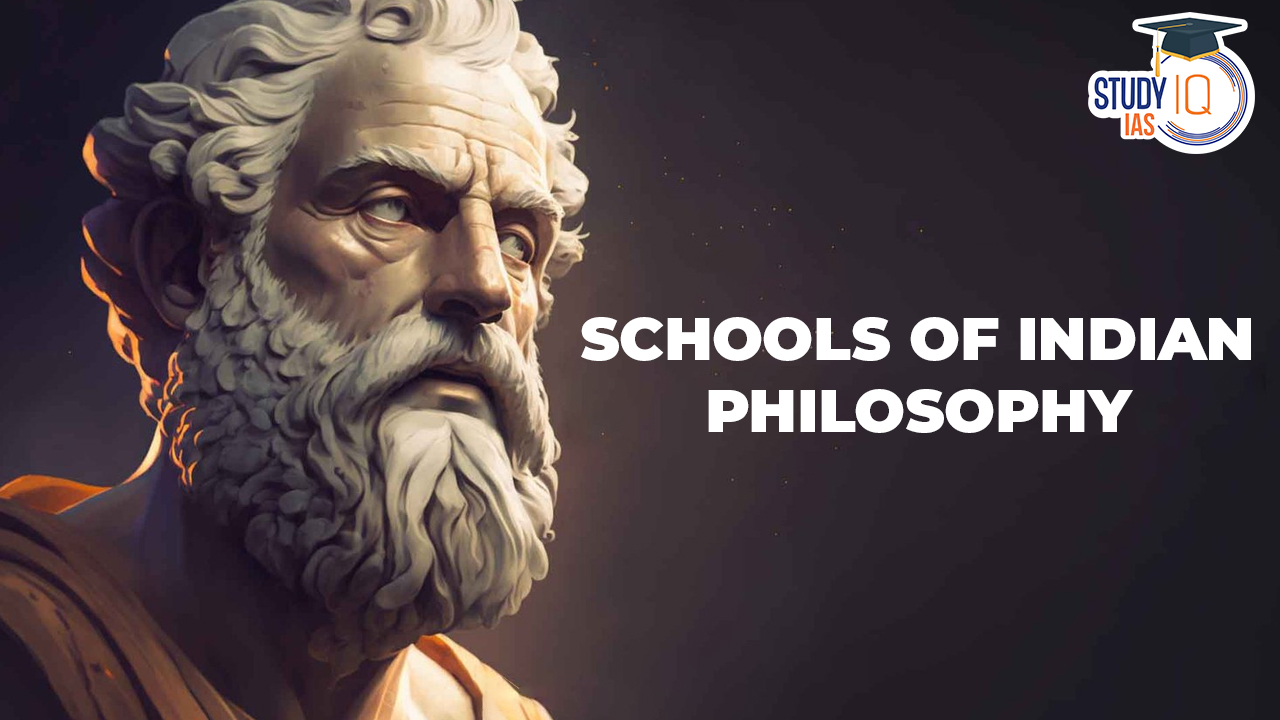Table of Contents
Philosophy in India emerged as an exploration of the mysteries of life and existence. It encompasses several distinct traditions of philosophical thought that originated in the Indian subcontinent.
These traditions have evolved over centuries and are represented by six Schools of Indian Philosophy:
- Vaisheshika
- Nyaya
- Samkhya
- Yoga
- Purva Mimansa
- Vedanta (also known as Uttara Mimansa)
These systems were founded by notable sages: Konada, Gotama, Kapila, Patanjali, Jaimini, and Vyasa, respectively. They continue to guide intellectual discourse in India.While these Schools of Indian Philosophy developed over many generations with contributions from individual thinkers, they share a fundamental harmony in their pursuit of truth, despite their apparent differences.
Schools of Indian Philosophy
Indian Philosophy, known as Darshanas in Sanskrit, encompasses a range of philosophical traditions that emerged in the Indian subcontinent. These traditions include Hindu philosophy, Buddhist philosophy, and Jain philosophy. Indian philosophers view philosophy as a practical discipline aimed at enhancing the quality of human existence.
We’re now on WhatsApp.Click to Join
Orthodox Schools of Indian Philosophy
Orthodox schools, known as “astika,” were originally referred to as Sanatana Dharma and are collectively recognized as Hinduism today. These schools draw their authority from the ancient Vedas and encompass six systems of philosophy and theology:
Samkhya (Kapila):It is regarded as one of the most ancient philosophical traditions.
- The sage Kapila is conventionally acknowledged as the founding figure of Samkhya philosophy.
- Samkhya philosophy presents a fundamental duality in the universe, comprising puruṣa (representing ‘consciousness’) and prakṛti (representing ‘matter’).
- It strives to construct a metaphysical framework based on this dualistic concept.
- Samkhya asserts the existence of an infinite multitude of comparable yet distinct purushas, with none holding superiority over another.
- Advaita Vedanta finds its philosophical roots in this tradition.
Yoga (Patanjali): Sage Patanjali is credited as the founder of Yoga, which has a close affiliation with the Samkhya school of Hinduism.
The primary goal of Yoga is self-improvement, encompassing physical, mental, and spiritual dimensions. The Yoga Sutras of Patanjali serve as a pivotal text for this school. It is believed that practicing Ashtanga Yoga, comprising eight essential components:
- Yama: Restraint from violence, lying, theft, or avarice.
- Niyama: Cultivating virtuous habits like contentment, purity, Vedic study, and meditation on God.
- Pratyahara: Selecting an object of focus.
- Asana: Achieving a stable and comfortable posture.
- Pranayama: Mastery of breath control.
- Dharana: Concentrating one’s attention on an object.
- Dhyana: Engaging in meditation.
- Samadhi: Achieving profound concentration leading to the loss of self-awareness.
According to Yoga philosophy, successful practice leads to a profound realization of the distinction between purusha and prakriti, ultimately resulting in liberation from suffering.
Nyaya (Gautama Muni):The term ‘Nyaya’ signifies “justice,” “rules,” “method,” or “judgment.” Sage Gautama is the founder of this school with his Nyaya-sutras. Nyaya approaches philosophical inquiries with a scientific and rational perspective. According to Nyaya,
There are four valid sources of knowledge:
- Perception
- Inference
- Comparison
- Testimony.
Conversely, four sources of invalid knowledge include memory, doubt, error (false certainty), and hypothetical arguments. This school emphasizes that acquiring knowledge through the five senses is the exclusive path to achieving liberation from the cycle of birth and death.
Vaisheshika (Kanada):Founded by Sage Kanada, the Vaisheshika school, akin to Buddhism, acknowledges only two trustworthy means of knowledge: perception and inference.This school is renowned for its contributions to naturalism, particularly its form of atomism in natural philosophy. It posits that all physical objects can be broken down into paramāṇu (atoms), and one’s experiences emerge from the interplay of substance, quality, activity, commonness, particularity, and inherence.
- Vaisheshika: Realistic and objective philosophy of the universe
- Reality is composed of six categories: substance, attribute, action, genus, distinct quality, and inherence
- Universe is made up of five elements: earth, water, air, fire, and ether
- God is the guiding principle
- Karma determines rewards and punishments
Purva Mimamsa (Jaimini):Propounded by Sage Jaimini, Purva Mimamsa places considerable emphasis on the significance of yajnas and mantras in sustaining the activities of the universe.
- This school staunchly upholds the absolute authority of the Vedas and contends that human beings can attain salvation only by aligning their actions with the principles enshrined in the Vedas.
- Dharma is said to be the core of the Vedas. Following the dharma results in merit, which after death gets one to paradise.
Vedanta:Also known as Uttara Mimamsa, Vedanta is deeply influenced by the Upanishads. It represents a monistic school of philosophy, asserting that the world is an illusion, and the sole reality is Brahman.
Vedanta has several sub-branches, including Advaita, Visishtadvaita, Dvaita, Dvaitadvaita, Shuddhadvaita, and Achintya Bheda Abheda, each offering distinctive interpretations of these profound teachings.
| School of Philosophy | Founder | Core Philosophy | Key Principles/Components | Influence |
| Samkhya | Sage Kapila | Dualism: Puruṣa (consciousness) and Prakṛti (matter) | Infinite distinct purushas, Advaita Vedanta connection | |
| Yoga | Sage Patanjali | Self-improvement: Physical, mental, spiritual | Ashtanga Yoga: Yama, Niyama, Pratyahara, Asana, Pranayama, Dharana, Dhyana, Samadhi | Advaita Vedanta connection |
| Nyaya | Sage Gautama | Scientific rational approach | Four valid sources of knowledge: perception, inference, comparison, testimony | Path to liberation through knowledge |
| Vaisheshika | Sage Kanada | Naturalism and atomism | Perception and inference as reliable knowledge sources | |
| Purva Mimamsa | Sage Jaimini | Emphasis on yajnas and mantras, Vedas’ absolute authority | Attaining salvation by adhering to Vedic principles | |
| Vedanta | Upanishads influence | Monism (Brahman as sole reality), multiple sub-branches | Advaita, Visishtadvaita, Dvaita, Dvaitadvaita, Shuddhadvaita, Achintya Bheda Abheda | Profound influence on Hindu philosophical thought |
Read more About :- Difference between Gandhara and Mathura School of Art
Unorthodox Schools of Indian Philosophy
Unorthodox schools, known as “nastika,” do not accept the authority of the Vedas. They include:
Charvaka (Brihaspati):
Charvaka, also known as Lokayata, represents a materialistic and hedonistic school of thought. Its founder, Charvaka, authored the Barhaspatya Sutras during the final centuries B.C. The original texts of Charvaka have been lost, and our understanding of them largely relies on critiques from other philosophical schools. As early as the 5th century, Saddaniti and Buddhaghosa associated the Lokayatas with the Vitandas or Sophists. The term “Carvaka” was initially recorded in the 7th century by the philosopher Purandara and later in the 8th century by Kamalasila and Haribhadra. Charvaka emphasizes direct perception as the most reliable means to establish the truth of any assertion and advocates for a life characterized by joyful living.
Read More About:- Sufism in India
Buddhist philosophy (Siddhartha Gautama):
Buddhist philosophy is a belief system founded on the teachings of Siddhartha Gautama. It is a non-theistic philosophy, with its principles not primarily concerned with the existence or non-existence of God. Central to Buddhist philosophy are the Four Noble Truths:
- Existence of suffering.
- The cause of suffering.
- The cessation of suffering.
- The path to the cessation of suffering.
Buddhism’s philosophy of life, aimed at attaining “Nirvana” to escape suffering, is based on the Eightfold Path, which comprises:
- Right Faith (Samyak Dristi).
- Right Resolve (Samyak Sankalpa).
- Right Speech (Samyak Vakya).
- Right Action (Samyak Karmanta).
- Right Living (Samyak Ajiva).
- Right Thought (Samyak Smriti).
- Right Concentration (Samyak Samadhi).
- Right Effort (Samyak Vyayama).
Jain philosophy (Mahavira):
Jainism, in existence as early as the 6th century B.C., was rejuvenated by Mahavira, the 24th Jain Tirthankara. According to Jainism, achieving Nirvana or liberation is accomplished through three jewels: Right Philosophy, Right Knowledge, and Right Conduct (Tri-ratna). Right conduct includes five abstinences: refraining from lying, stealing, pursuing luxury, striving for possessions, being unchaste, and causing harm (Ahimsa).
Ajivika Philosophy:
A related philosophical system sometimes categorized under the heterodox category is Ajivika Philosophy. The Ājīvikas may have been a loosely organized group of wandering ascetics (shramanas or sannyasins). Prominent figures in this philosophy included Makkhali Gosala and Sanjaya Belatthaputta. This was an ascetic movement during the Mahajanapada period in the Indian subcontinent.
| School of Philosophy | Founder | Core Philosophy | Key Principles/Components | Influence |
| Charvaka (Lokayata) | Charvaka | Materialistic, hedonistic | Emphasis on direct perception, joyful living | Unorthodox, challenging Vedic authority |
| Buddhist Philosophy | Siddhartha Gautama | Non-theistic, Four Noble Truths | Four Noble Truths: Existence of suffering, its cause, cessation, path to cessation; Eightfold Path leading to “Nirvana” | Significant global impact |
| Jain Philosophy | Mahavira | Spiritual, liberation through abstinences | Three jewels: Right Philosophy, Right Knowledge, Right Conduct (Tri-ratna); Five abstinences (Ahimsa) | Influential in Indian spirituality |
| Ajivika Philosophy | Makkhali Gosala | Ascetic, loosely organized wanderers | Considered part of the Shramana tradition, influence during Mahajanapada period | Historical but less prominent compared to other schools |
Read More About :- Later Mural Traditions
Difference between Orthodox Schools and Unorthodox Schools
Orthodox and Unorthodox schools of Indian philosophy differ in terms of their acceptance of the authority of the Vedas, their core philosophies, and their approach to understanding the nature of reality. Here are the key differences between the two:
| Aspect | Orthodox Schools (Astika) | Unorthodox Schools (Nastika) |
| Acceptance of Vedic Authority | Accept the authority of the Vedas as foundational texts. | Reject the authority of the Vedas and may critique Vedic beliefs. |
| Theistic Orientation | Typically have a theistic orientation and acknowledge the existence of a divine reality or God. | Can be non-theistic or atheistic; may not adhere to the concept of a supreme deity. |
| Materialistic or Skeptical | Emphasize spirituality, ritual, and religious elements in their philosophies. | May have materialistic or skeptical philosophies, as in the case of Charvaka (Lokayata). |
| Major Schools | Six major orthodox schools: Samkhya, Yoga, Nyaya, Vaisheshika, Purva Mimamsa, and Vedanta. | Various unorthodox schools including Charvaka (Lokayata), Buddhist philosophy, Jain philosophy, and Ajivika philosophy. |
| Diverse Philosophical Traditions | Diverse but generally aligned with Vedic teachings. | Diverse, encompassing a range of philosophical traditions that may challenge Vedic beliefs. |
Schools of Indian Philosophy UPSC
Indian Philosophy comprises diverse traditions, with Orthodox Schools (Astika) accepting Vedic authority, often theistic, and including Samkhya, Yoga, Nyaya, Vaisheshika, Purva Mimamsa, and Vedanta. These emphasize spirituality, rituals, and religious elements. In contrast, Unorthodox Schools (Nastika) reject Vedic authority, can be atheistic or non-theistic, and include Charvaka (Lokayata), Buddhist philosophy, Jain philosophy, and Ajivika philosophy, often with materialistic or skeptical views. Indian Philosophy explores the mysteries of life, guiding intellectual discourse while offering a spectrum of beliefs and approaches to understanding the nature of reality, making it a rich tapestry of philosophical thought in the Indian subcontinent.


 Birsa Munda Birth Anniversary 2025: Life...
Birsa Munda Birth Anniversary 2025: Life...
 Military Innovations of Afghans and Turk...
Military Innovations of Afghans and Turk...
 Self-Respect Movement, History, Objectiv...
Self-Respect Movement, History, Objectiv...

























